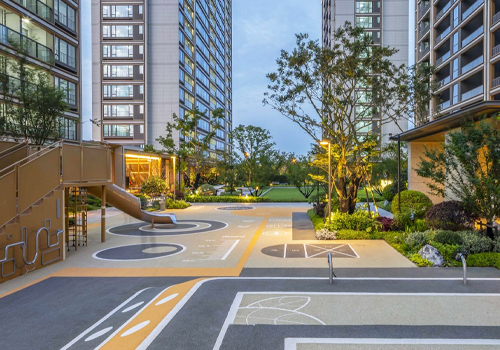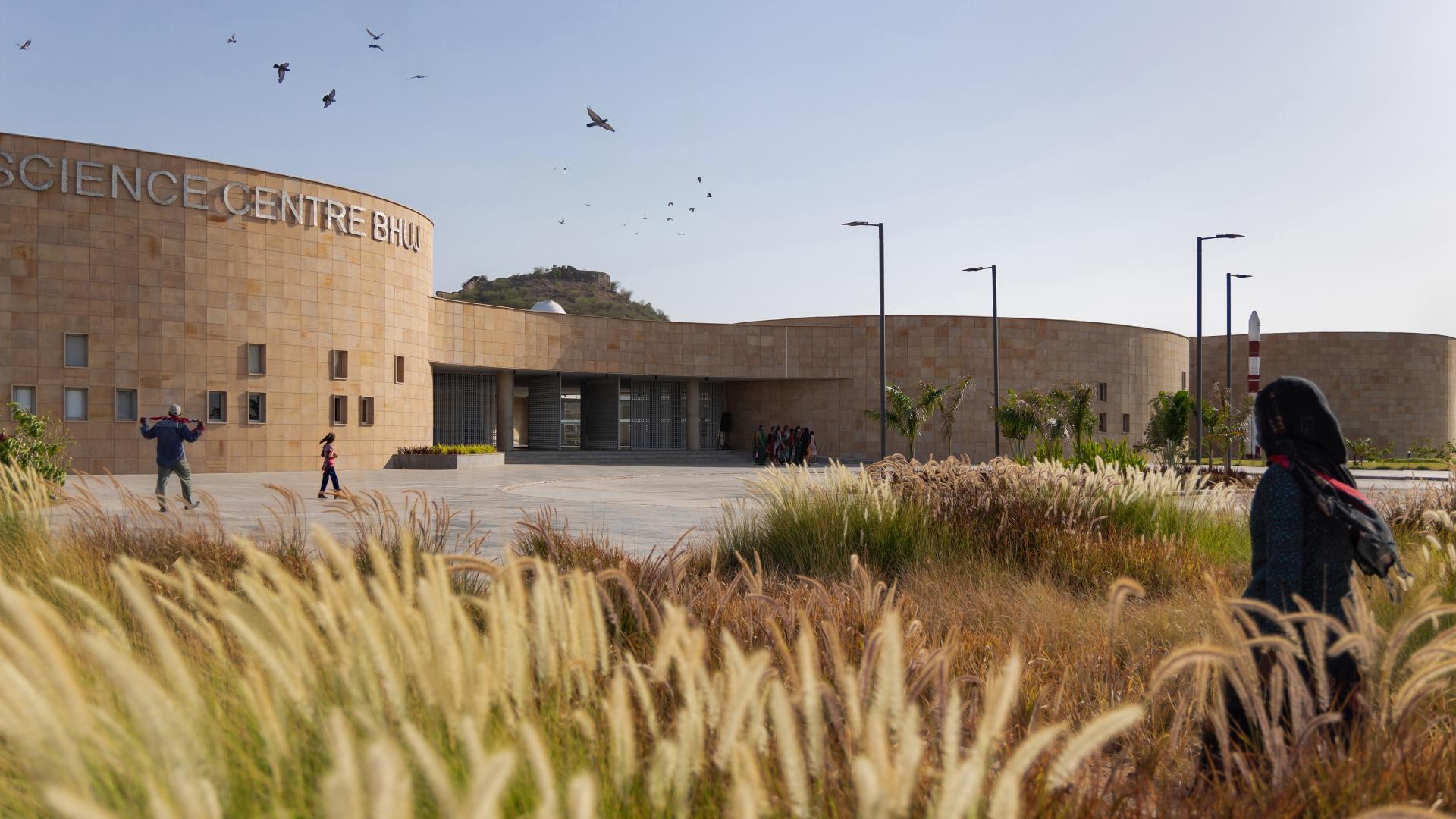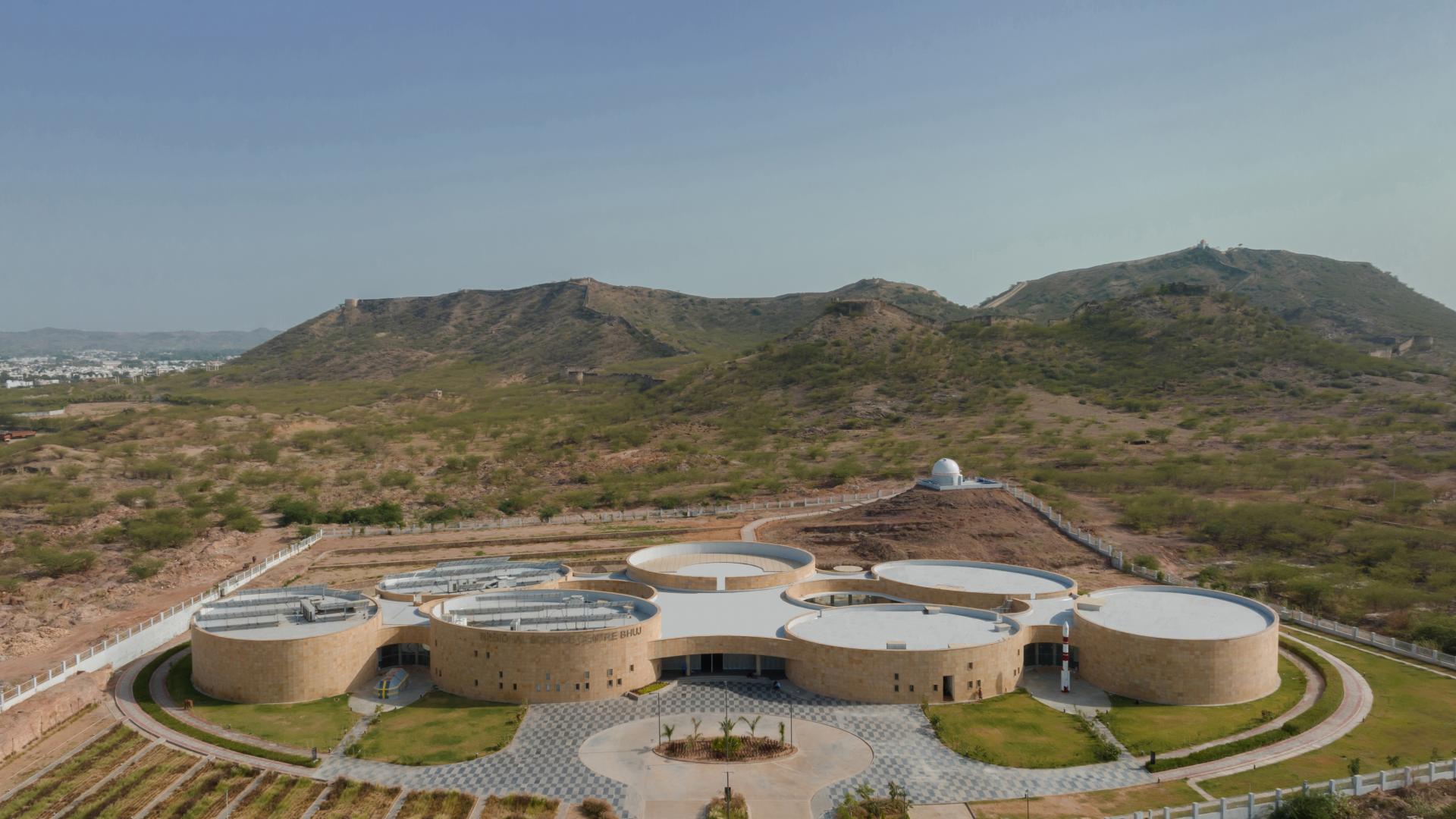2024 | Professional

Regional Science Centre at Bhuj
Entrant Company
INI Design Studio
Category
Architectural Design - Cultural
Client's Name
Gujarat Council on Science and Technology
Country / Region
India
The state of Gujarat in India established the Council of Science and Technology (GUJCOST) in 1986 with an aim to 'Bring Science to People's Doorstep. GUJCOST is establishing community science centers across the state through public-private partnerships, creating top-notch facilities that educate, entertain, integrating science with culture.
The Regional Science Centre in Bhuj, in the Kutch region of Gujarat, is situated north of a hillock known locally as Bhujiyo Dungar. The North-South axis acts as a pedestrian path and connects with the East-West axis along which all the galleries are located. The design philosophy draws inspiration from the immediate context of Smriti Van, a memorial to the 2001 earthquake, merging science, culture, and social interaction. It also takes cues from organizational patterns in science, with circular forms echoing structures like living cells, celestial bodies, and planetary craters, creating a cohesive and symbolic design.
Characterized by their mud plastered, bamboo-framed cylindrical forms, the vernacular Bhunga houses of this desert region represent a way of life deeply rooted in local culture. Adapted to the climate and structurally stable, they are well-suited for this earthquake-prone region with sandstorms and cyclonic winds. Governed by the Venturi effect and Bernoulli's principle, they facilitate cool breezes while diverting strong winds, ensuring structural integrity. Positioned on platforms and closely spaced, Bhungas create shaded common areas, fostering community engagement.
Taking inspiration from traditional architecture, the Centre's six exhibition galleries are elliptical cylinders, rising up six-eight meters, casting cooling shadows and allowing for fluid transitions between exhibits. The structure employs a dry-clad system with locally sourced stone to harmonize with the regional context and reduce cooling loads. Clustered around common spaces, the galleries offer visitors a dynamic journey through interconnected exhibits, with landscaped outdoor exhibits and step-down courtyards carved out of the intermittent spaces.
The programmatic arrangement aligns themes focused on Space, Nanotechnology, Energy, and Marine Navigation along the east-west 'science' axis. Administration and library/workshop blocks, along with Nobel/Bonsai galleries and a central plaza courtyard, align with a north-south 'cultural' axis. Technological aids such as a 5D theatre, interactive media, and application pods complement the immersive edutainment approach.
Credits

Entrant Company
Savannah College of Art and Design
Category
Interior Design - Retails, Shops, Department Stores & Mall


Entrant Company
LANSONG DESIGN GROUP
Category
Landscape Design - Residential Landscape


Entrant Company
Jiangmen Disili Optoelectronics Co., Ltd
Category
Product Design - Baby, Kids & Children Products


Entrant Company
Department of Fine Arts of National Kaohsiung Normal University, 116 Art Center, J.P. Art Center, Kao-Ho Hospital
Category
Conceptual Design - Exhibition & Events










